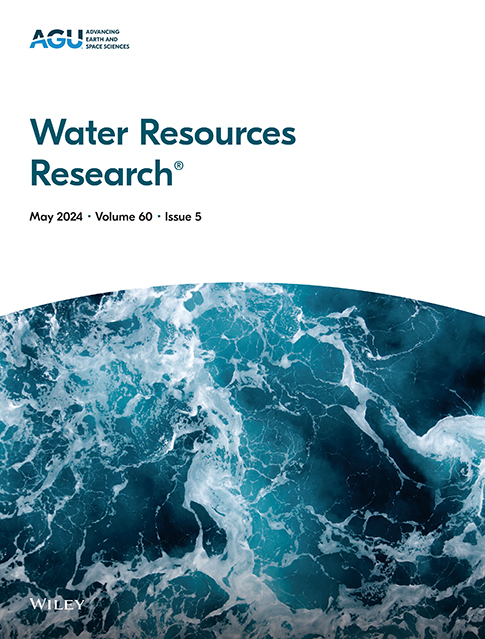Contribution of Moisture Recycling to Water Availability in China
IF 5
1区 地球科学
Q2 ENVIRONMENTAL SCIENCES
引用次数: 0
Abstract
Moisture recycling is an integral component of the hydrological cycle, enhancing regional water availability by returning evaporated moisture as precipitation either locally or downwind. In China, characterized by uneven water resource distribution and regional water scarcity, understanding moisture recycling dynamics is crucial for sustainable water management. Our study quantified the contribution of moisture recycling to precipitation and water availability across China and its sub-regions during 2000–2022 using an atmospheric moisture tracking model. Results revealed that 59% of China's evapotranspiration (ET) was recycled within the region, contributing 299 mm/year to precipitation and 98 mm/year to water availability. Distinct spatial patterns emerged, with the highest ET contribution to precipitation and water availability in subtropical Central and South China (477 mm/year precipitation; 210 mm/year water availability) and the Qinghai-Tibet Plateau (355 mm/year precipitation; 121 mm/year water availability). Water availability exchanges through moisture transport between sub-regions were quantified, with Northeast China and subtropical Central and South China being net water availability recipients of 31 and 67 billion m3/year, respectively. The remaining sub-regions were net exporters, with tropical South China and Northwest China experiencing the largest net exports, amounting to −40 and −30 billion m3/year, respectively. The study not only advances our understanding of the hydrological dynamics in China but also offers critical insights for sustainable water management practices aimed at mitigating challenges posed by water scarcity and climate change. It highlights the significance of integrating moisture recycling considerations into water resource management strategies to enhance resilience against hydroclimatic variabilities.水分循环对中国水分可利用性的贡献
水分循环是水文循环的一个组成部分,通过将蒸发的水分作为降水返回当地或下风,提高区域水的可用性。在水资源分布不均和区域缺水的中国,了解水分循环动态对可持续水资源管理至关重要。本研究利用大气水分跟踪模型量化了2000-2022年中国及其子区域水分再循环对降水和水分可利用性的贡献。结果表明,中国59%的蒸散发(ET)在区域内被循环利用,对降水和水分的贡献分别为299 mm/年和98 mm/年。其中,亚热带中南部地区ET对降水和水分有效性的贡献最大(477 mm/年);210 mm/年可用水量)和青藏高原(355 mm/年降水量);年可用水量121毫米)。通过水分输送进行的水有效性交换被量化,东北地区和亚热带中华南地区的净水有效性分别为310亿m3/年和670亿m3/年。其余分区域为净出口国,热带华南和西北地区净出口量最大,分别为- 400亿立方米和- 300亿立方米/年。该研究不仅促进了我们对中国水文动态的理解,而且为旨在缓解水资源短缺和气候变化带来的挑战的可持续水资源管理实践提供了重要见解。它强调了将水分再循环考虑纳入水资源管理战略以增强对水文气候变化的恢复能力的重要性。
本文章由计算机程序翻译,如有差异,请以英文原文为准。
求助全文
约1分钟内获得全文
求助全文
来源期刊

Water Resources Research
环境科学-湖沼学
CiteScore
8.80
自引率
13.00%
发文量
599
审稿时长
3.5 months
期刊介绍:
Water Resources Research (WRR) is an interdisciplinary journal that focuses on hydrology and water resources. It publishes original research in the natural and social sciences of water. It emphasizes the role of water in the Earth system, including physical, chemical, biological, and ecological processes in water resources research and management, including social, policy, and public health implications. It encompasses observational, experimental, theoretical, analytical, numerical, and data-driven approaches that advance the science of water and its management. Submissions are evaluated for their novelty, accuracy, significance, and broader implications of the findings.
 求助内容:
求助内容: 应助结果提醒方式:
应助结果提醒方式:


